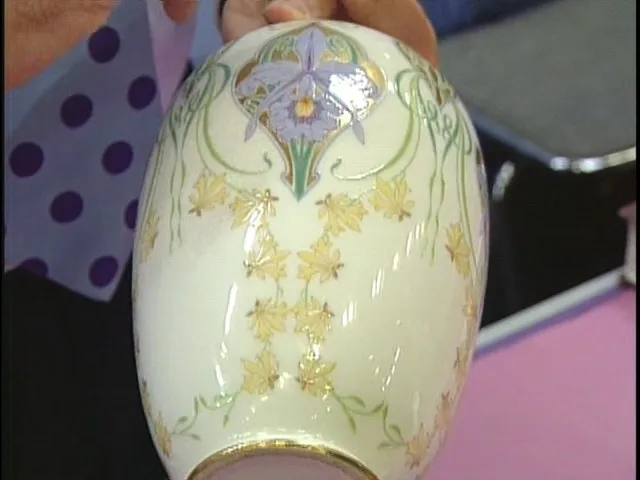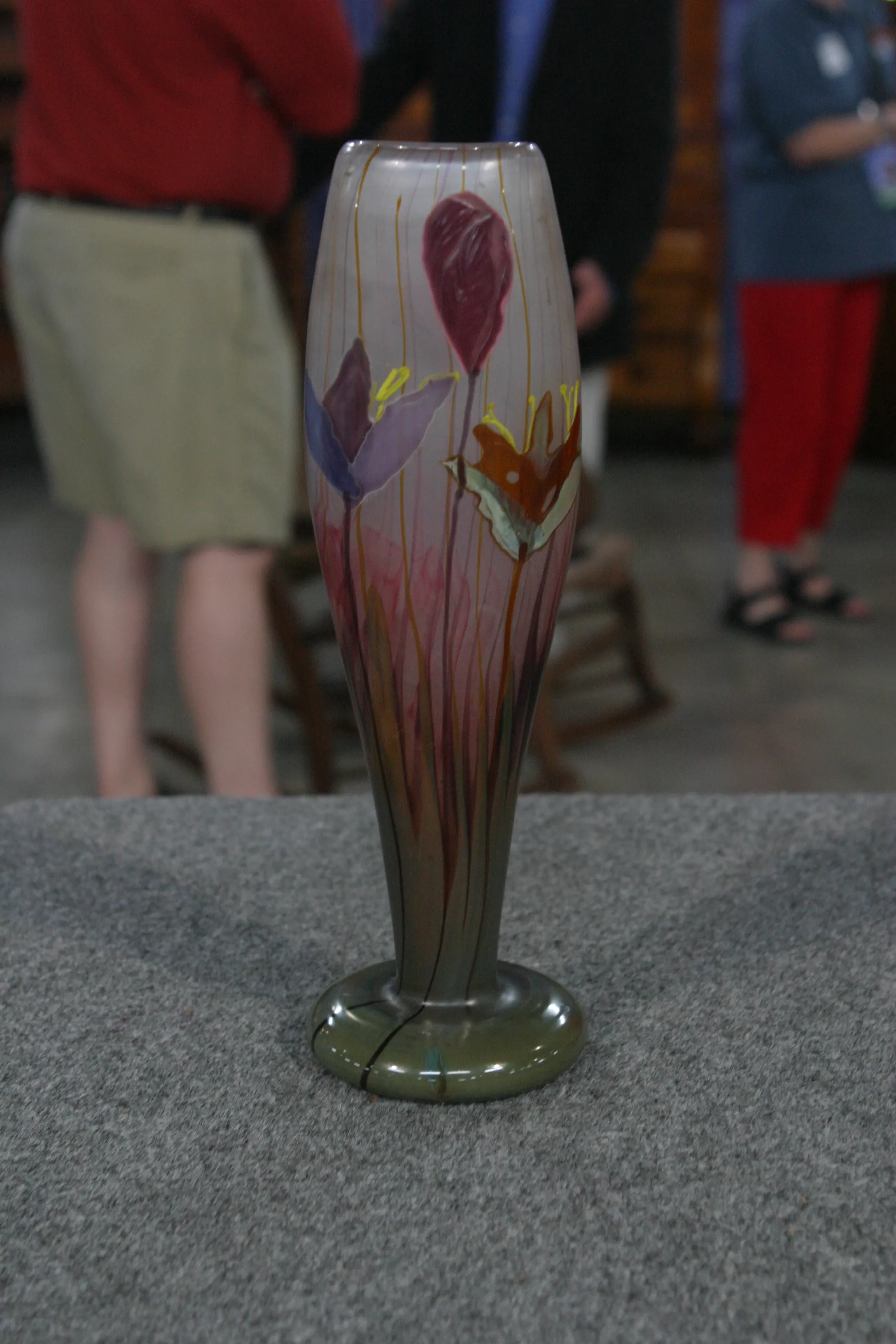GUEST: These bronzes were purchased by my great-grandfather, we believe, around the turn of the century. I inherited them last year. Unfortunately, my grandmother passed away. She gave them to my father, and my father knows that I have an interest in Asian art and he passed them along.
APPRAISER: You did some research yourself, didn't you?
GUEST: Yes, I did. We went to the Seattle Asian Art Museum, and they do have a research library there, and the person there helped us figure out that these are Japanese. We always thought they were Chinese, so it was very interesting. And he believed that they were probably made around 1900, 1910.
APPRAISER: Okay, and he actually found the name of the maker, you said. It was Nishimura?
GUEST: Yes, correct.
APPRAISER: They are Japanese, but what confuses people is the basic shapes that these are are Chinese shapes and they are archaic, ancient bronze shapes that first originated in China prior to 1500 B.C. Used in ritual ceremonies for food cooking and for wine. This particular form is called a Ding, and that's D-I-N-G. And these forms in Chinese art are called Gu, G-U. What helps us to know that these are not ancient bronze forms-- versus modern-- is the decoration. At the end of the 19th century, there was a great change in Japanese society where you had the disbanding of the samurai. A lot of the people who had been engaged in crafts such as sword making had to be reemployed, and the government encouraged them to move into new fields, which included making metalwork, bronzes, for export to the West. And if you look at this particular form, you'll see at the top this little animal, which in Chinese is called a Chi Lin. It's a mythical animal. But look at the detail that's there, the sort of pinwheel incised designs. Even the fur on the face is present.
GUEST: Right.
APPRAISER: And if you go down, you'll see here the cloud forms on the top. That's because this was used as an incense burner, and actually, the incense would come up through the top, waft through these cloud shapes and they would swirl around this animal... Giving it a very mystical kind of appearance. And the details on this are equally impressive. But what's unusual about these dragons are the wings. You don't generally find winged dragons of this type on bronzes prior to the 20th century. I would suspect that this was made sometime after the Meiji period ended around 1911, 1912, so I would have thought somewhere around 1915. It's not as crisp as you would find in the Meiji period, and it actually has a mark on the bottom that says it was made in Tokyo. So there's great detail, wonderful workmanship, but you said that your grandmother did something. What did she do?
GUEST: Probably, maybe 20, 30 years back, she did polish the pieces.
APPRAISER: She polished it.
GUEST: Yes.
APPRAISER: . And we don't polish bronze. This surface would've been a chocolate-brown color. So that's hurt the value a little bit. The value for these three pieces, for insurance coverage purposes, would be $30,000.
GUEST: Wow! Okay... wow, that was much more than I thought.





